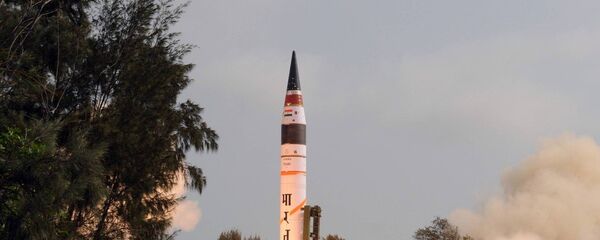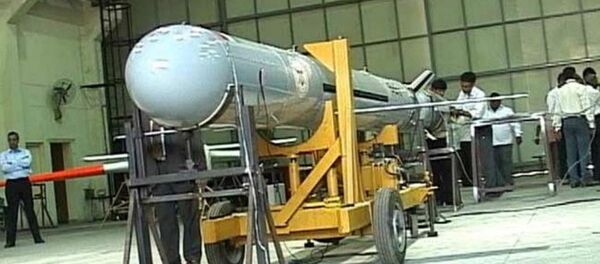In an editorial, China’s state-run Global Times wrote, "If the UN Security Council has no objection over (inter-continental ballistic missiles), let it be. The range of Pakistan's nuclear missiles will also see an increase," according to the Times of India.
The comment came following New Delhi’s sixth and reportedly final test of the Agni-IV ICBM, developed by India’s Defence Research and Development Organisation, featuring nuclear capabilities and a strike range of 4000 km. The sophisticated surface-to-surface missile is also equipped with a fifth-generation on-board computer and can handle temperatures of over 4,000 degrees centigrade.
The Global Times editorial stated, "If the Western countries accept India as a nuclear country and are indifferent to the nuclear race between India and Pakistan, China will not stand out and stick rigidly to those nuclear rules as necessary. At this time, Pakistan should have those privileges in nuclear development that India has."
Adding later that "(China) will not sit still if India goes too far…New Delhi understands that it does little good to itself if the Sino-Indian relations are ruined by any geopolitical tricks."
China claims that New Delhi has "broken" regulations governing the number of long-range missiles and nuclear weapons allowed by the United Nations, suggesting that Western governments are not holding India to the same standard as other countries.
"The US and some Western countries have also bent the rules on its nuclear plans. New Delhi is no longer satisfied with its nuclear capability and is seeking intercontinental ballistic missiles that can target anywhere in the world and then it can land on an equal footing with the UN Security Council's five permanent members," the editorial reads.
The 17-ton, 20-metre-tall Agni IV was launched at Abdul Kalam Island from the Integrated Test Range (ITR) around noon local time on Monday.
Not long before testing the Agni-IV, India successfully test-fired the Agni-V, which can can reach Europe and parts of northern China with a range of over 5,000 km.




